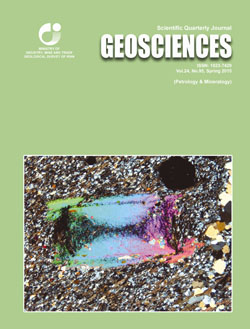Document Type : Original Research Paper
Authors
1 Ph.D. Student, Department of Geology, Faculty of Natural Sciences, Tabriz University, Tabriz, Iran
2 Associate Professor, Department of Geology, Faculty of Natural Sciences, Tabriz University, Tabriz, Iran
3 Professor, Department of Geology, Faculty of Natural Sciences, Tabriz University, Tabriz, Iran
4 Associate Professor, Department of Geology, Payam-e-Noor University, Iran
Abstract
The study area is located in north of East-Azarabaidjan (northwest of Iran). The most important intrusive bodies in the area include the Gharehdagh and Shivardagh batholiths and porphyry stocks of Sungun and Haftcheshmeh. The petrological and petrographical studies show that the composition of intrusives varies from gabbro through diorite, monzonite, and granodiorite to granite. All bodies are I-type and mostly metaluminous and calc-alkaline with medium to high potassium belonging to volcanic arcs. The most important alterations in ore-bearing areas include silicic, potassic, propylitic, phyllic, and argillic. Mo mineralization occurred mostly in quartz veins and veinlets within the potassic zone in porphyry systems and veins and also in endoskarn associated with garnet skarns. The amount of Mo increases in differentiated and biotite-bearing acidic bodies that have high values of Si, K, Rb, and REEs. The intrusive bodies enriched with K, Rb, and Ba and depleted in Zr, Ta, Y, Yb, and Nb elements indicate metasomatism of the upper mantle by subducting oceanic crust and subsequent generation of magma and its passes through relatively thick crust. The bodies bearing Mo mineralization are located mainly in the center of batholiths and have quartz monzonitic and granodioritic compositions.
Keywords

